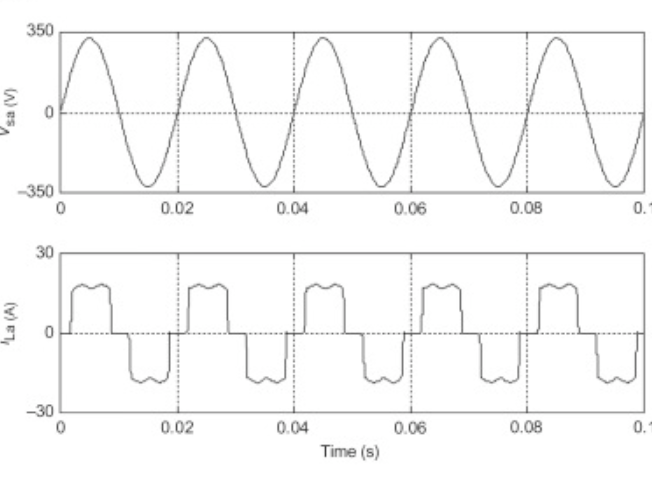The LCAP4KF DB link capacitor is a specialized electronic component designed for various applications in power electronics. Its primary function is to store and release electrical energy, helping stabilize voltage levels within circuits.
Typically found in DC link configurations, this type of capacitor plays a vital role in filtering out noise and smoothing power supply fluctuations. Its construction often includes high-quality dielectric materials that ensure longevity and performance under varying conditions.
What sets the LCAP4KF apart from other capacitors is its ability to handle significant ripple currents without compromising efficiency. This makes it particularly useful in renewable energy systems and electric vehicles, where reliable performance is essential.
Understanding its characteristics can help you appreciate why checking its status regularly is crucial for maintaining overall system health.
Why is it important to test your capacitor?
Testing your capacitor is crucial for maintaining the efficiency of your electronic devices. A faulty capacitor can lead to poor performance, causing interruptions or even complete failures in circuits.
When capacitors age or degrade, their ability to store charge diminishes. This can result in voltage fluctuations that affect other components connected within a system.
Regular testing helps identify these issues early on, allowing you to address problems before they escalate into significant malfunctions.
Moreover, ensuring your capacitor is functioning optimally contributes to energy savings and prolongs the lifespan of connected hardware. It’s an essential step in preventative maintenance that shouldn’t be overlooked.
In environments where reliability is key—like industrial settings—the importance of testing becomes even more pronounced. The cost of downtime far outweighs the effort involved in routine checks and maintenance.
Tools needed for testing the capacitor
To test an LCAP4KF DB link capacitor, you’ll need a few essential tools. First, a digital multimeter is crucial. This device allows you to measure voltage, current, and resistance accurately.
Next on the list is an insulation tester. This tool helps assess the dielectric strength of the capacitor, ensuring it can handle operational stresses without failure.
A capacitance meter can also be beneficial. It provides precise readings of your capacitor’s value and helps identify any deviations from its rated specifications.
Don’t forget safety gear like insulated gloves and goggles. Capacitors can hold charge even when disconnected, so protection is key while handling them.
Have some alligator clips handy for secure connections during testing. With these tools at your side, you’ll be well-prepared to tackle your capacitor tests effectively.
Step-by-step guide on how to test the LCAP4KF DB link capacitor
To test your LCAP4KF DB link capacitor, begin by disconnecting the power supply. Safety first: ensure that all energy is drained from the circuit to prevent accidents.
Next, gather your tools—a multimeter will be essential for this task. Set it to measure capacitance.
Once ready, carefully remove the capacitor from its housing. Take note of its orientation; you’ll want to reconnect it correctly later on.
Now, connect the multimeter to the appropriate terminals on the capacitor. Wait a few moments as it measures. Compare your reading with the specifications listed on the component itself.
If results are significantly lower than expected, it’s likely time for replacement. Remember to handle everything gently and avoid discharging any remaining voltage inappropriately during testing.
Common signs of a faulty capacitor
Identifying a faulty capacitor can save you from bigger problems down the line. One of the most noticeable signs is bulging or leaking. If you see any physical deformation, it’s time to take action.
Another red flag is unusual heat. A capacitor that runs hot may indicate internal damage or degradation. This can lead to complete failure if ignored.
You might also notice flickering lights or erratic behavior in your devices. These symptoms often signal that the capacitor isn’t providing stable voltage anymore.
Listen for strange noises like buzzing or hissing coming from electrical components. These sounds could mean that the capacitor is struggling to perform its job properly and may be on its way out.
Being aware of these signs helps in maintaining equipment and ensuring safety at all times.
Tips for maintaining and prolonging the lifespan of your capacitor
To maintain your LCAP4KF DB link capacitor, start by keeping the surrounding area clean. Dust and debris can cause overheating or shorts. Regularly inspect for any signs of corrosion or damage.
Temperature is crucial. Ensure that the capacitor operates within its specified temperature range. Excess heat can shorten its lifespan significantly.
Avoid frequent power surges, as they stress components and lead to premature failure. Use surge protectors where possible to shield your electrical systems.
Proper installation also matters; follow manufacturer guidelines closely for optimal performance. Tighten connections but avoid over-tightening, which can cause physical harm.
Consider scheduling routine inspections with professionals who understand capacitors well. Their expertise might catch issues before they escalate into bigger problems down the line.
Importance of regular maintenance and testing for optimal performance
Regular maintenance and testing of your LCAP4KF DB link capacitor are crucial for ensuring its efficiency. Over time, capacitors can degrade due to environmental factors like temperature fluctuations or electrical surges.
By routinely checking the performance of your capacitor, you can identify potential issues before they escalate into costly repairs or replacements. This proactive approach saves both time and money in the long run.
Additionally, regular testing helps maintain optimal operational conditions within your electronic systems. A well-functioning capacitor supports smooth performance and enhances overall reliability.
Neglecting maintenance may lead to unexpected failures that disrupt operations. Staying ahead with a consistent schedule not only prolongs the lifespan of your components but also boosts system stability.
Incorporating this practice into your routine ensures that all connected devices operate at their best, maintaining peak performance levels throughout their lifespan.
Conclusion
Testing your LCAP4KF DB link capacitor is an essential task for ensuring the reliability and efficiency of your electronic systems. Understanding what this component does and how to properly maintain it can prevent costly failures down the road. By following the straightforward steps outlined in this guide, you can confidently assess whether your capacitor is performing as expected.
Your commitment to routine checks will yield dividends in stability and longevity. With informed care, you empower yourself to ensure that your electronic devices operate smoothly over time.

